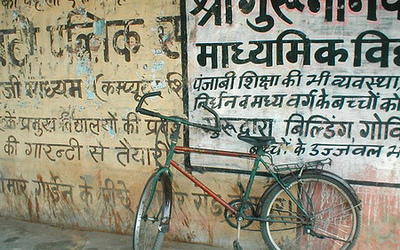The word ‘babu’ in Bangla means respect and politeness. But, when it comes to other Indian languages, it is used as a taunt for upper-class people. If you try to translate the word in English, no word matches the meaning and depth of the same word in Bangla.
This is an ignored and yet important crisis when it comes to the translation of Indian languages. The literature of any particular language originates from multiple contexts of the language. So, whenever one tries to translate a specific word from that language, it becomes difficult to upkeep the ‘essence’ and ‘depth’ of that word.

In this case, the problem is not just about cultural loss, it is the hierarchical organization of these languages. There are several languages and dialects in India. There is no particular estimate; some point it at 300, some at 600. The number of officially recognized languages in India is 22. Some languages have the privilege of being some of the most translated languages in India. The languages at the top of this hierarchy are Bangla, Malayalam, Tamil, etc. Some other languages are Marathi and Kannada. These languages are mostly translated into English and Hindi.
Although most of these languages are popular, highly spoken with rich history and heritage, they still have an ’emerging’ title with them. In this scenario, we need to ask ourselves when will languages like Western Pahari, with its script Tankri find their place. Keeping in mind the fact that Tankri is one of the oldest written forms of South Asia. Even there are many lesser-known dialects of the Tibetan-Burman language group or the ones spoken at north-Indian borders. Will it ever get a chance?
The role of translation in the deteriorating Condition of Indian languages:
Despite gaining independence 75 years ago, we are yet to make progress in the deteriorating state of Indian languages. It’s not about more than 200 dialects that have been lost since the 1960s, but also about the speakers of these languages. The previous generations have been loyal readers of Hindi and regional literature, but their present generations are more comfortable with English literature than Hindi. The sole aspect to be blamed in this case is not the colonial attitude of the elite schools of India. The Indian families deeply rooted in their linguistic heritage are struggling with this problem.
The argument that English is a professional requirement also does not work in this case. The reason is that earlier when the foreign invaders reigned in India, the language for official work, documentation work, and commerce used to be Persian Sanskrit or English. But, it did not lead to the deterioration of regional languages or dialects. It did not displace the local languages, but rather new words were added in the language that elevated them. This is the reason some of the greatest Indian poets and writers have been multilingual.
Some reasons for it are that from a young age, textbooks include fairy tales and extracts of English novels. The content is stuck between the 1930s and 1970s. There is less mention of technology, mobile phones, or even television, and more towards steam engines. The second problem is the decreased pace of innovation in Indian languages.
But the biggest problem is translation. Any regional writer like a Marathi writer will be happy when his work is translated into foreign languages for foreign readers. But, this does nothing for the regional language like Marathi in this case. The success of English lies in the fact that we can read Greek literature of Homer like the Iliad and odyssey English without having to learn ancient Greek. So, there is a need for inward translation rather than outward translation. Any language is a means for transmitting or expressing a particular idea. So, its literature grows when it absorbs material from other languages that are lacking in Indian Languages.